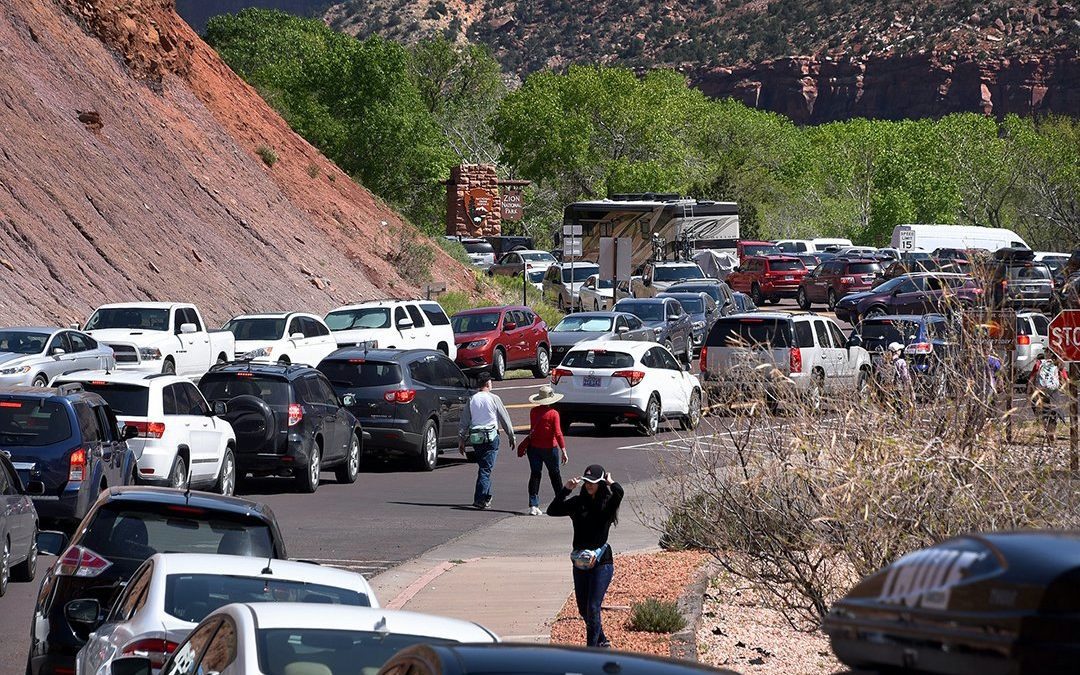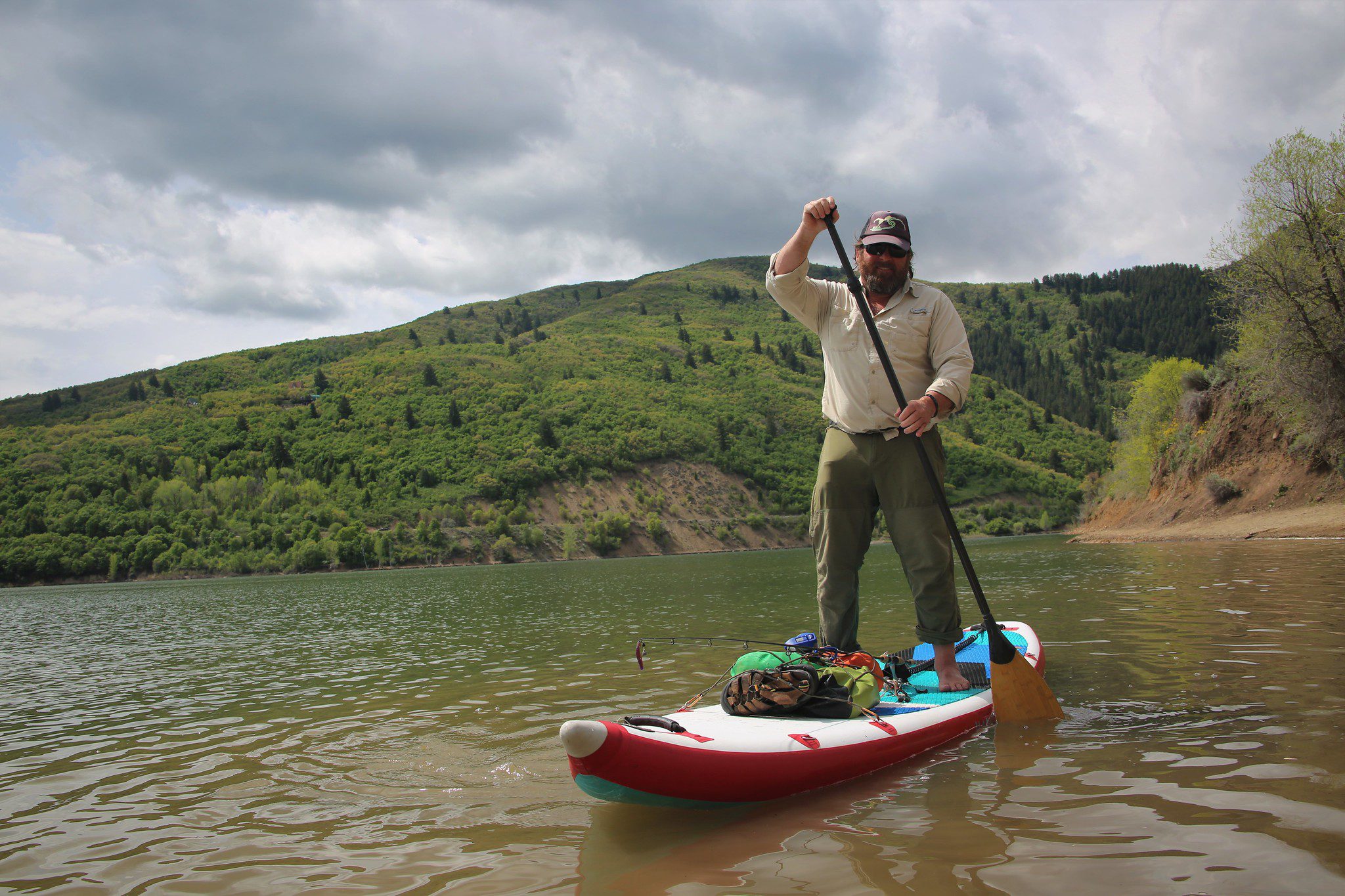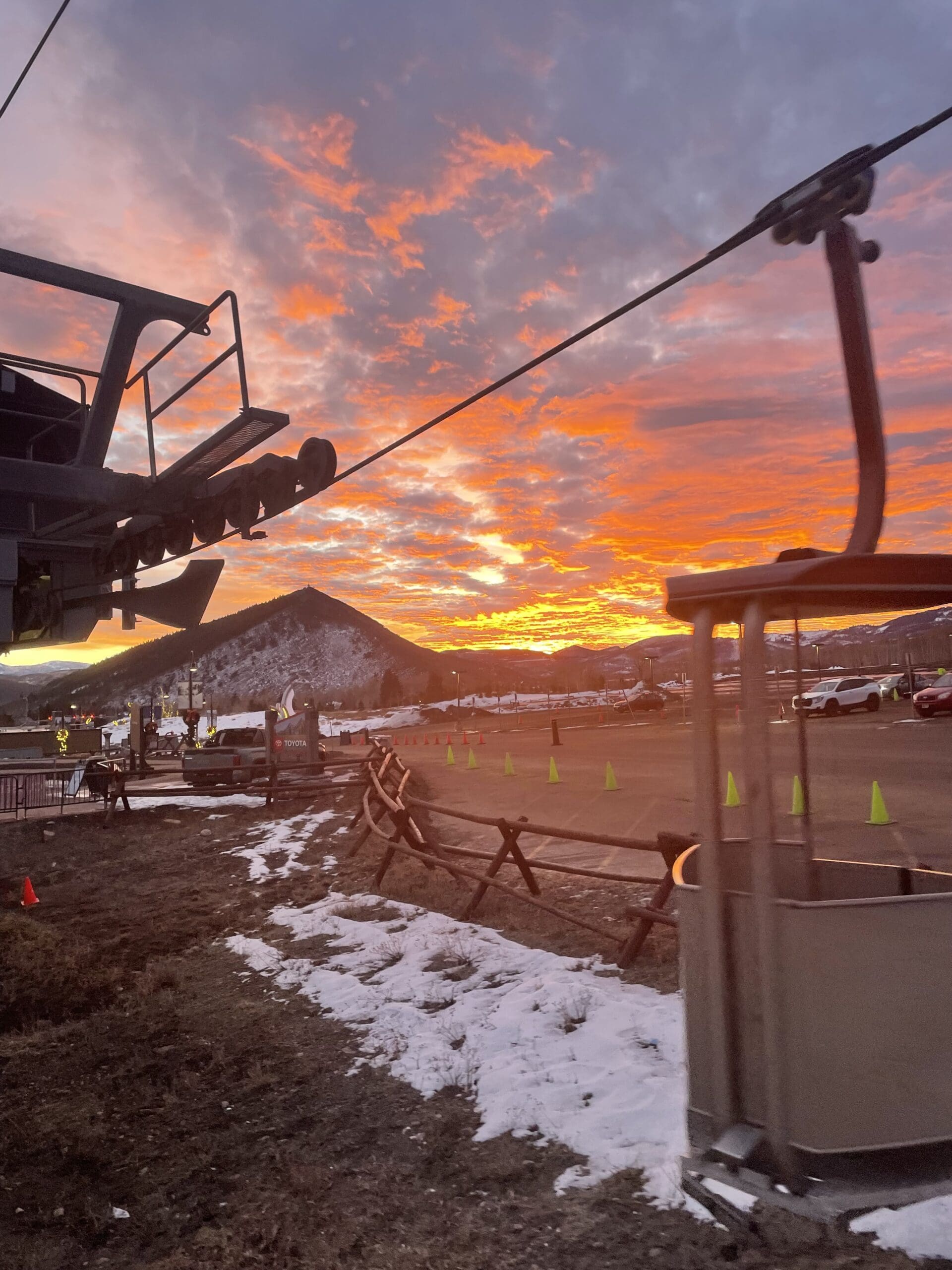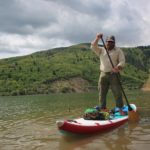News
Workers near Zion homeless amid housing crunch, tourism bump

Traffic at Zion National Park in May. Photo: National Park Service
VIRGIN , Utah — A hot wind whipped across the red sand just outside of Zion National Park where a woman and her dogs live in a 1970s camper because she can’t find housing in Springdale, where she works.
After four years of working at Springdale’s Bit and Spur restaurant, 28-year-old Ashley Gathman can not find any affordable housing in the small gateway town, the Spectrum newspaper reported.
Instead, she chooses to live in the 1976 orange and white El Dorado that blends in with the Bureau of Land Management area she camps on in Virgin. With a bed, a small kitchenette, some storage and an unplugged window air conditioning unit, she has a mobile home.
“I’d rather just suffer through it, I guess,’” Gathman said. “It’s easier for me than it would be for a friend who got kicked out of their house and is now trying to find more housing.”
But her old “neighbor,” 27-year-old Sophie Frankenburg, had to suffer through it though she was the town’s associate planner and homeless.
“There were some frustrating parts of sitting in that chair and in conversations happening about affordable housing and the people that work here can’t live here,” Frankenburg said.
And that’s not for a lack of trying on her coworkers’ part. She said the staff at the Town of Springdale would connect them if they knew of an opening.
“I think the majority of people that I came into contact with every single day while I was at my job … they would have had no idea that we were living in a 20-foot trailer in the middle of the desert with no running water,” Frankenburg said. “You just wouldn’t even know.”
At the mouth of the nation’s third most popular national park, the three-mile-long and one-mile-wide town only has slightly more than 300 housing units and over 1200 hotel rooms, officials said, most of which are occupied.
While they’re aiming to add 150 more housing units and 600 more hotel rooms, which will reach their maximum build-out, the question is, where do they put it?
“We don’t have a ton of room to be able to grow and develop … but it’s definitely not unlimited,” Springdale Director of Community Development Tom Dansie said.
With towering canyon walls on either side of the canyon, some have thought the solution is to build high-density housing vertically like the red rock did thousands of years ago.
But residents resoundingly say no.
“We don’t want high-density housing, we don’t want a lot of apartments, we don’t want to feel urban and crammed and dense and developed,” Dansie said.
With a median age of about 60, some of Springdale’s residents remember a time when the canyon was silent and belonged to the locals.
Now, the 346 residents of Springdale see over four million people pass through their tiny town on the way to Zion yearly, which is thousands a day.
And those tourists need the service industry — from hotels to restaurants to gas stations and more.
About 30% of Springdale workers are in retail, with another 34% are in arts, entertainment, recreation, accommodation and food services — meaning over 64% of Springdale’s workers are focused on serving tourists.
Statistics from the Kem C. Gardner Policy Institute at the University of Utah show that one in seven jobs in Washington County was supported by visitor spending in 2019.
In October 2020, Springdale hired Zions Public Finance, Inc. to make a housing strategy against the housing crisis, which found that over 1,000 employees commute to Springdale daily to work.
“Springdale does not necessarily have to rectify the differences in housing costs with neighboring communities, but it should understand the reasoning of such and potential economic development tools that may help address the issue,” the report said.
Yet these employees feel pushed out by the rooted residents of Springdale and the “amenity migration” of newly remote workers, while there are vacant second homes and a perceived priority given to tourists.
“You know pretty soon you’re not gonna have a town, you’re not gonna have workers to cater to all of these tourists that you want to come into town,” Gathman said. “Pretty soon, you’re going to have to stop kicking us out and turning things over to Airbnb.”
While nearby St. George is one of the fastest-growing cities in the country, and even the city is having to deal with the crowding.
“St. George is facing similar strains,” Lawyer Bruce Jenkins of Jenkins, Bagley, Sperry said. “Where is the workforce going to live? They’re going to be pushed farther out farther away and have to drive farther to come into work.”
And while housing might be cheaper farther away, the added cost of commuting takes a toll on a low income. The Gardner Institute estimates that the monthly wage for leisure and hospitality in Washington County is $1,572.
“The majority of jobs available in Springdale are tourism-oriented service sector jobs, which makes it even more difficult to find adequate housing that’s affordable to people who are employed in those jobs,” Dansie said.
The labor market is red hot right now, Utah Department of Workforce Services Regional Economist Lecia Langston said, and desperately asking for more workers.
Langston said Washington County started growing jobs in August of last year, “which is pretty unusual,” partially due to the surge in tourism and tourism jobs.
“Partly because there is COVID, and we didn’t have the restrictions of our neighbors, so we’ve seen really rapid growth,” she said. “I think Washington County really benefited from the shutdowns in Nevada and California … I think that really benefited us in tourism.”
Yet the entire country is struggling with a labor shortage right now, despite opportunity and relatively high wages, and housing is compounding the issue.
“It’s difficult for people to find employees, but I think it’s more acutely in Springdale and I think part of that is because of the housing issue,” Dansie said.
Businesses are greatly concerned about the lack of housing for their employees, Nate Wells, chamber of commerce Zion Canyon Visitors Bureau president said.
“We’ve had several from outside of the area who have wanted to come and work for us, they were excited about the opportunity, and it ended up not working out because housing was so difficult to find or, or even impossible to find,” Wells said.
After four years of being a Springdale employee, Gathman thinks the town needs to change its paradigm and act fast.
“A lot of the employers in town are realizing that employee housing is a major, a major thing and that they need it because otherwise they’re gonna lose their employees,” Gathman said. “Unfortunately, I wish the town of Springdale would understand that, but they’re kind of on the bandwagon of more AirBnbs and more hotels; keep inviting all the tourists in.”
Regardless, people still obviously work in Springdale, but the commute contributes to the crowding and climate change.
“Obviously that has impacts on traffic and it has impacts on parking,” Dansie said.
The Census said most people in Springdale drive alone to get to work. More cars equal more pollution from exhaust straight into a national park. More need for parking without adequate parking spaces forces cars off-road, damaging the land and wildlife.
In terms of the green in your pocket, Langston said business owners and local officials have to think about the cost to commute to Springdale when someone could make the same, or more, in St. George with virtually no commute.
“You’ve got to cover that plus you need to attract people away from the St. George jobs, and you have to make it worth their while to have a commute,” she said. “People are spending time on the road that they might not otherwise.”
And commuters like renters, some officials say, don’t have the investment in the community that residents want to build community.
“If all the people who work in Springdale at the end of their shift, they go home, they’re less invested in the community, there’s less of a connection between the employees and the businesses and the community,” Dansie said. “And it becomes more of an us versus them businesses versus residents kind of situation.”
But experts like Dejan Eskic from the Gardner Institute wants to remind people that most everyone was a renter at one time.
“You can’t just say I want owners in my town and I don’t want renters because that’s going to have negative impacts in other places of the economy that you’re going to have to play whack a mole with,” Eskic said. “I think we are heading more into a renter market where it’s harder and harder to attain homeownership.”
While people flock to the great outdoors, they are paying greatly for their new indoors, forcing locals out.
“So we’ve now had an influx of people with massive resources coming into this little tiny county offering $150,000 cash above asking price and paying cash for all these homes,” Christensen said. “So what are you doing? You’re pricing out the community members that live there, right?”
And construction in 2021, especially in relatively remote Springdale, is more expensive and more delayed than in years past due to COVID-related supply shortages, adding to the cost.
Last November, Springdale Mayor Stan Smith lost his business as the Bumbleberry Inn crumbled in flames from an overnight kitchen fire. Even then, Smith said the supplies and equipment he needed to rebuild were delayed.
While the Springdale study noted that wildfires in the west drove newcomers and visitors to the town in droves, it also destroyed some of the lumber supply needed for construction.
“Lumber has increased four-fold in 2020, and this has further exasperated the gap between housing costs and what a median-income earning household can afford,” the report said.
Together, combined with the more expensive land right as it is next to the popular national park, all make for a hefty price tag.
“A notable consideration is that construction costs are moderately higher in Springdale than in most other competitive markets. This, in combination with limited available land, results in total overall costs that are too high for a significant portion of the market,” it said.
While costs might be high for locals, they might not be for newcomers.
A study from Harvard University this year found that without the requirement to commute due to pandemic-driven work-from-home practices, “many more” will look for lower-cost housing away from employment centers.
“People from the coast who are now able to work wherever because they’re all working remotely, and they’re able to keep their California wages or Washington wages or New York wages, they’re saying well, geez, all I need is internet in the computer,” Tai Christensen, chief diversity officer for Cedar City-based CBC Mortgage. “And a lot of people want to live outside of Zion.”
Additional space in occupied homes or vacant ones in Springdale and St. George are being converted into short-term rentals for tourists or seasonal workers.
“There’s kind of a shared demand for those homes that would otherwise be rented to employees are now available as short term,” Wells said of Springdale.
The Gardner Institute estimates that over the past five years the number of short-term rental units in Washington County jumped around 141%, from about 1,300 in 2017 to over 3,000 this year.
“The biggest problem with short-term rentals, especially the ones that are not licensed, is they take inventory off the market,” Adam Lenhard, St. George City manager said.
In St. George in that same time period, there were about 6,600 vacant units, and about 72% of those were seasonal use properties like second homes, the CDBG report said.
“If those illegal short-term rentals were turned into long-term rentals, we would immediately have several hundred affordably priced units on the market, or at least more units on the market that could be rented out long term,” Shirlayne Quayle, St. George’s director of economic vitality and housing said.
“I just can’t wrap my mind around it,” Gathman said. “if you’re only going to be there a couple of months out of a year, or whatever, like there are so many people who could use that space for even if it is just a few short months.”
But in some zones, short-term rentals are illegal, though Lenhard said the only way they’ve enforced that is through community reporting.
“I think it’s a mistake, frankly, to not allow the city to ban the listing of short-term rentals in zones that don’t allow for that,” Lawyer Jenkins said.
Over 3.6 million visitors went to Zion last year, breaking fall records even during pandemic-restricted travel. But a different demographic showed up on the roads of Springdale, the spontaneous, and often uneducated, tourists.
“Last year was very difficult,” Gathman said. “And I was pissed and frustrated and so depressed because of the lack of respect that people had for the land.”
With closures and a desire to social distance in the great wide open, thousands of campers pushed local transient residents from their usual haunts and in some ways destroyed the parcels of land they call home.
“In one of my favorite spots, someone cut down a tree just to pull in their camper,” Gathman said. “That was my hammock tree that I loved.”
In July, The Spectrum released an investigation into illegal camping in the area outside Zion that agencies have been slow to stop.
Though Washington County increased patrols and passed more rigid laws in response last month, Gathman said there are sometimes when she is forced to illegally camp outside of designated parcels.
“I’ve had no choice. There are places that I go to that I’m not supposed to be. But there’s nowhere else for me to go when it gets that busy,” she said.
Gathman feels that tourists are prioritized over residents, a perceived practice that is doomed to fail, she said.
“I think tourism brings interest to our area, we live in a beautiful place. And I think the more that gets discovered, the more demand there will be for housing,” Wells said.
Springdale’s housing strategy report recognized the need for increased housing and looked for solutions, while also dedicating pages to polls on how locals want to protect the town that exists from crowding.
From these polls, locals said they would be in favor of high-density housing up to eight units only.
“In some cases, the solution in Springdale will not necessarily be lowered, more achievable prices, but rather more opportunities for a balanced residential market that provides a greater variety of housing options,” it said.
Now a Salt Lake City resident, Frankenburg is removed from the struggle over space and reflects on being an essentially homeless city planner.
“There was a lot of irony behind that,” Frankenburg said. “I cared a lot about that community and it was really hard to see maybe some people that didn’t care enough, in my opinion.”
__
The Spectrum reporter Sean Hemmersmeier contributed reporting to this article.


















